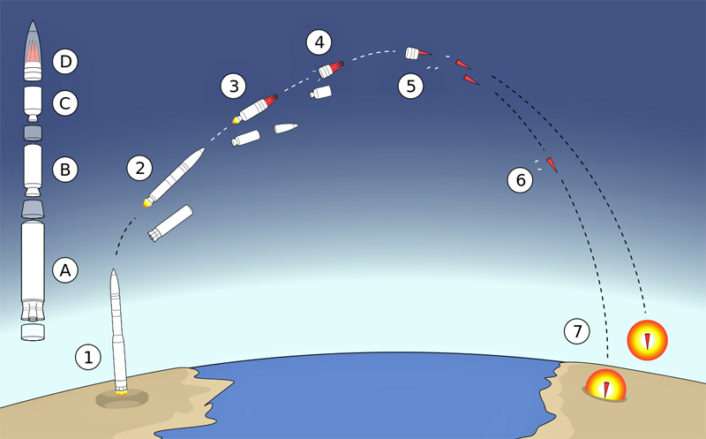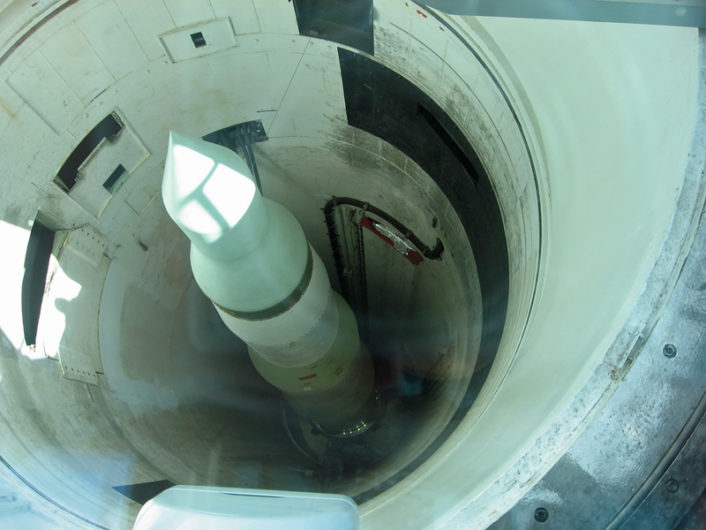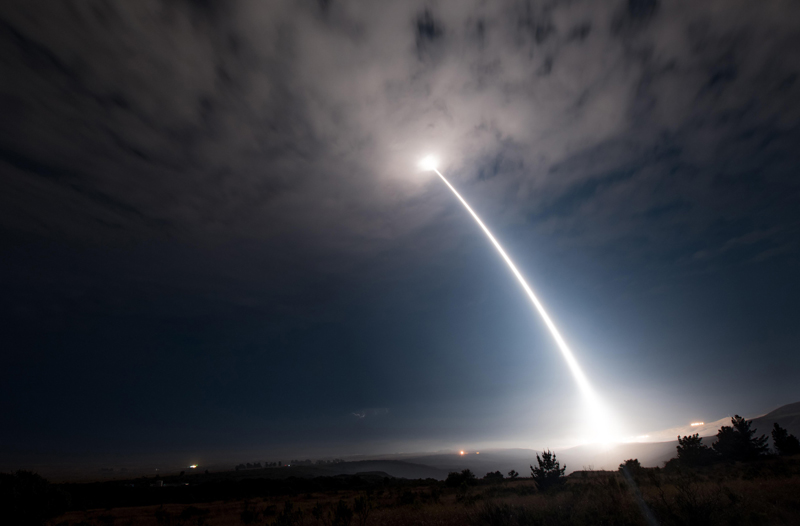Latest Pacific ICBM Test Proves U.S. Readiness in Turbulent Region as Tensions Rise.
The U.S. Air Force has conducted an operational test of its LGM-30 Minuteman III Intercontinental Ballistic Missile (ICBM) from Vandenberg Air Force Base in California. The missile was unarmed, carrying a single test reentry vehicle according to the Global Strike Command.
Members of the 90th Missile Wing based at Warren Air Force Base, Wyoming conducted the test launch from California. The missile was launched yesterday morning, August 2, at 2:10 California time.
The single simulated reentry vehicle covered 4,200 miles on its way to the Kwajalein Atoll in the Marshall Islands. It landed in a missile test range used by the U.S.
In an operational attack the LGM-30 would be armed with a Multiple Independent Reentry Vehicle or “MIRV”. The MIRV payload on a Minuteman III includes three separate 300-500 kiloton nuclear warheads with independent targets. The warheads separate upon reentry into earth’s atmosphere above their predetermined targets and strike over a wide area. The use of multiple reentry vehicles for large warheads makes intercepting them over a large target area nearly impossible. The missile’s NS-50 inertial navigation system is largely immune to countermeasures once launched and is accurate to within 200 meters according to the Minuteman III’s builder, Boeing.

The U.S. currently fields 450 nuclear-armed operational LGM-30 Minuteman III missiles.
Set against the backdrop of this week’s missile launch, Boeing strategic deterrence chief Frank McCall told reporters the Minuteman III is an aging legacy ICBM platform from the 1950’s. According to McCall, the Minuteman ICBM platform was only intended to “Last a decade”.
During the late 1980’s the U.S. fielded the LGM-118 Peacekeeper ICBM. The LGM-118, popularly known as the “MX missile” was intended to be a survivable solution to a Soviet nuclear first strike on the continental U.S. Controversy over weapons treaties and basing for the MX missile limited its deployment to only 50 missiles using existing Minuteman missile silos until the program was cancelled entirely in September 2005.

The U.S. Air Force has proposed the need for an all-new ICBM design concept to replace the aging Minuteman platform called the Ground Based Strategic Deterrent or “GBSD” missile program. Boeing, Lockheed and Northrop are each competing for the new GBSD contract.
The proposed new GBSD concept is intended to be an “open-architecture, modular” design that is highly adaptive to mission requirements and can be readily updated to maintain technical superiority and strategic relevance.
As with all major defense programs, costs for the proposed GBSD program have been criticized. Several media outlets have published estimates of $85 billion spread over a 20-year program for a force of 400 missiles.
While North Korea has made rapid and significant progress in their long-range missile program and nuclear program to include weapons research the strategic balance still tips very heavily in favor of the United States. The U.S. remains the only country to employ nuclear weapons operationally when it launched manned nuclear strikes from strategic bombers on the Japanese cities of Hiroshima and Nagasaki in 1945.
Since the operational nuclear strikes at the end of WWII and throughout the Cold War the U.S. has relied on a “nuclear triad” of three different strategic nuclear launch platforms that include Submarine Launched Ballistic Missiles (SLBMs), land-based Intercontinental Ballistic Missiles (ICBMs) and a variety of air-delivered nuclear weapons that include air-launched cruise missiles (ALCMs), Short Range Attack Missiles (SRAMs) and the now antiquated but still operational air-dropped nuclear bombs.
Time to strike targets in North Korea from missile bases in the U.S. Midwest and West coast may be less than 40 minutes from launch to impact, but submarine launched ballistic missiles deployed closer to the Korean peninsula would likely have weapons on target in much less time.
This most recent missile test was planned in advance of Korean tests according to the Pentagon, but it is reasonable to suggest it transmits a clear message that the U.S. nuclear deterrent is current and capable.








